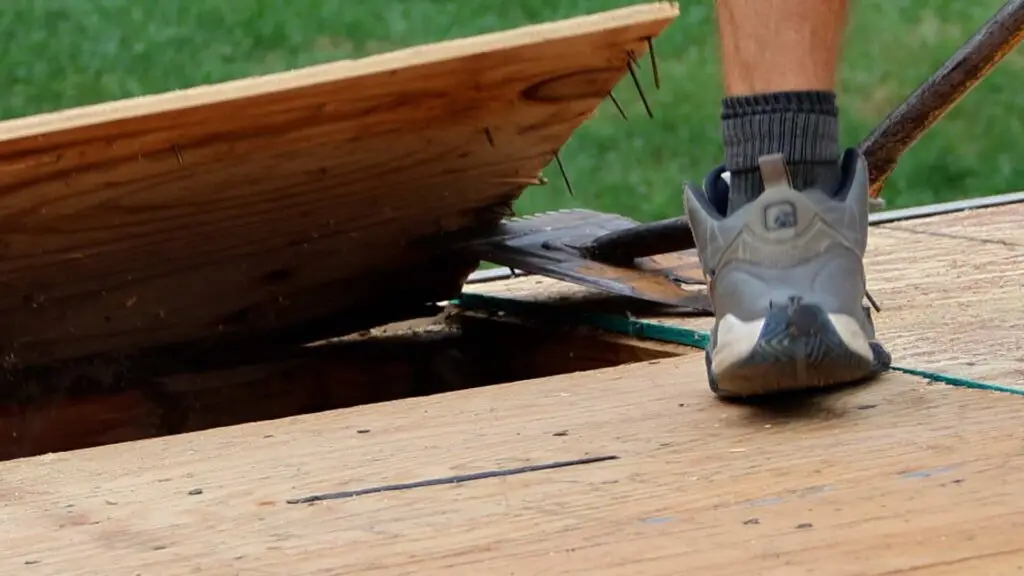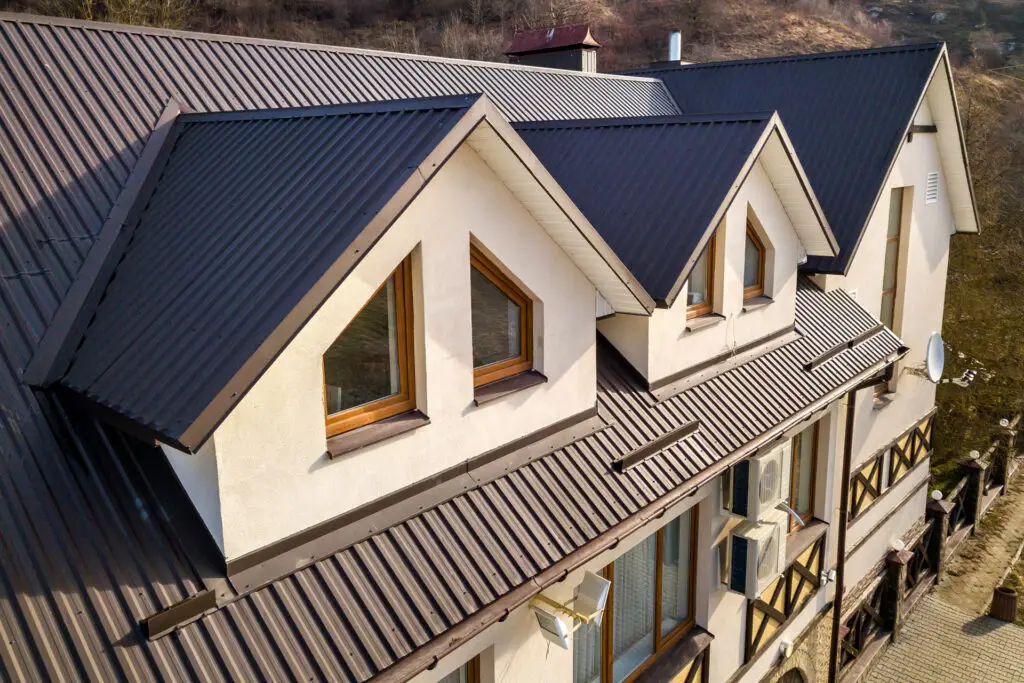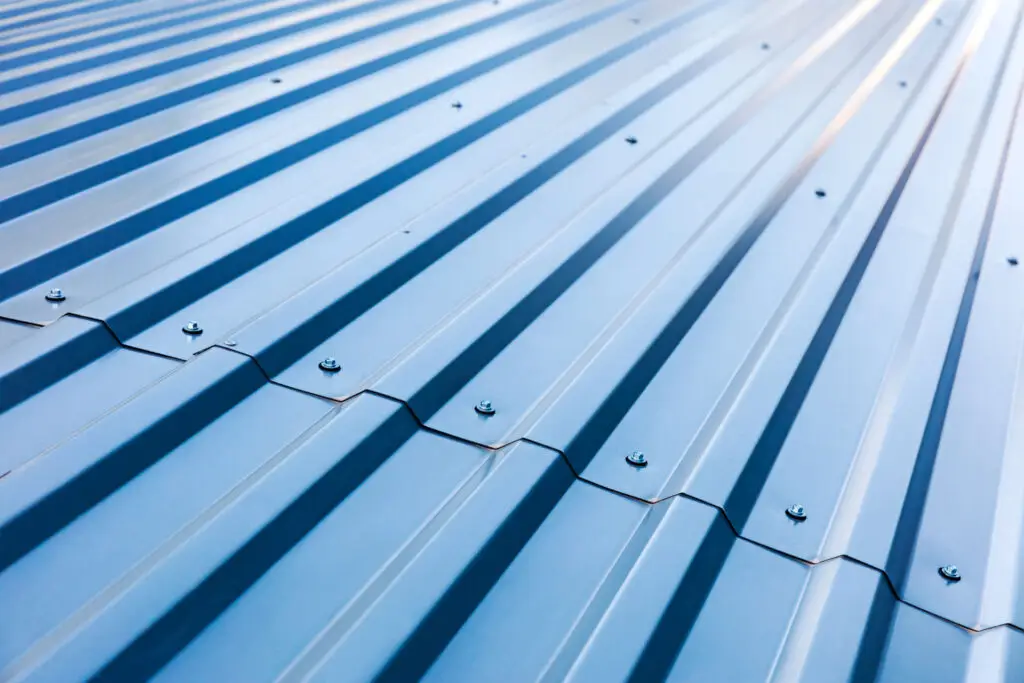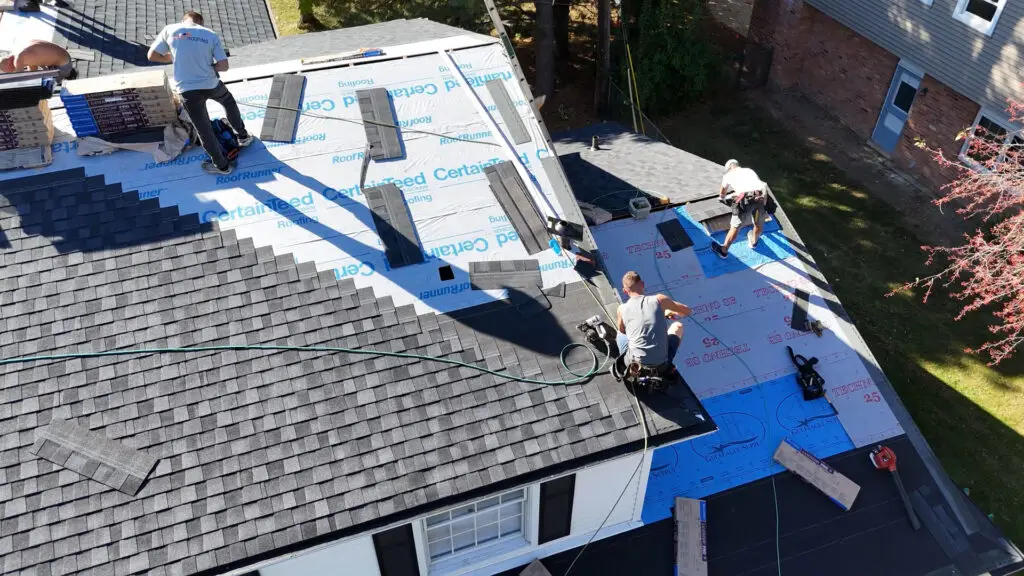A leaking roof is more than just an inconvenience. It’s a signal that your home’s first line of defense has been compromised. Whether it’s a small drip or a major water stain spreading across your ceiling, early action is critical. Unaddressed leaks can lead to structural damage, mold growth, ruined insulation, and costly roof and other repairs over time.
In this guide, we’ll walk through how to identify a leak, what causes it, and how roof leak repair is best handled—either by you or with help from a professional contractor like BCM Roofing.
Why Roof Leaks Happen
Most roof leaks don’t begin as major problems. They develop slowly due to wear, weather, or small installation issues. Some of the most common causes include:
- Aging shingles that have cracked, curled, or lost granules
- Damaged flashing around chimneys, skylights, or vents
- Clogged gutters are causing water to back up under the shingles
- Poor installation or workmanship from a prior repair
- Storm damage from wind, hail, or debris
- Ice dams form along the eaves in winter
- Nail pops or exposed fasteners letting in moisture
Many of these issues start small but worsen quickly as they are exposed to harsh weather. A cracked shingle or loose flashing may not seem urgent, but wind, rain, and snow can force water into these tiny gaps. Over time, that moisture breaks down roofing materials, accelerates rot, and eventually leads to interior leaks. The freeze/thaw cycles in Michigan winters make this even more urgent, as trapped water expands into cracks and widens them with each cycle.
How to Spot a Roof Leak Early
Leaks don’t always announce themselves with a drip. The sooner you catch one, the easier and cheaper it will be to fix.
Inside Your Home
- Water stains on the ceiling or upper walls
- Peeling paint, bubbling drywall, or a musty smell
- Signs of mold in the attic or upstairs rooms
- Sagging insulation or warped wood framing
Outside the Home
- Missing, cracked, or lifting shingles
- Damaged flashing or exposed fasteners
- Water pooling on the roof or near valleys
- Ice dams along the edges in winter
- Overflowing or clogged gutters

How to Trace the Source of a Leak
Water doesn’t always travel in a straight line, which makes pinpointing roof leaks more difficult. That’s why roof leak repair often starts with finding the true source, which may be several feet away from where water appears inside.
Tips to Track a Leak:
- Inspect the attic during the day. Turn off the lights and look for daylight coming through the roof boards.
- Look for water trails or stains. Use a flashlight to follow dark lines or mold patterns on rafters.
- Use a hose test. On a dry day, have someone run water over the roof while you observe the attic.
- Pay attention to roof penetrations. Vents, pipes, and chimneys are common leak points.
If you can’t find the source or feel unsure, it’s best to call in a professional.
The Risk of Waiting on Roof Leak Repair
Some homeowners assume a small leak is no big deal, especially if it’s not actively dripping. But leaks almost always get worse over time.
Here’s what delaying roof leak repair could cost you:
- Water damage to drywall, ceilings, and floors
- Rotting roof decking or framing
- Mold and mildew growth, which can spread quickly and affect indoor air quality
- Insulation damage, leading to higher energy bills
- Electrical hazards if water reaches the wiring
Even a minor leak left unchecked for a season can escalate into a major repair or full roof replacement.

DIY Roof Leak Repair: What’s Safe to Try
If you’re comfortable with home maintenance and the leak appears small and localized, some temporary fixes can buy you time:
What You’ll Need:
- Roofing cement or flashing tape
- Replacement shingles (if needed)
- Roofing nails, hammer, and pry bar
- Ladder and safety harness
- Caulk or sealant for vents and flashings
Quick Fixes to Try:
- Re-seal vent boots or flashing that have gaps
- Replace a missing or broken shingle
- Patch small holes with roofing cement
- Use a tarp for emergency protection during a storm
Important: Don’t attempt any repairs when the roof is wet, icy, steep, or difficult to access. If you’re unsure, it’s always safer to call a pro.
While simple fixes can buy time, they are rarely a permanent solution. Patching over a leak without addressing the underlying issue, such as failed flashing, rotted underlayment, or poor ventilation, can allow damage to continue unnoticed. Additionally, improperly performed DIY repairs may void manufacturer warranties or create new vulnerabilities. If leaks persist after basic repairs or if you cannot safely access the affected area, it’s time to call a professional roofing contractor.
When to Call a Professional for Roof Leak Repair
Not all leaks are obvious—or safe to fix yourself. That’s when a licensed contractor like BCM Roofing comes in. Even if a leak seems minor, calling a professional ensures that all potential causes are addressed. Experienced roofing contractors not only fix the visible issue but also inspect surrounding materials, check attic ventilation, and identify signs of hidden damage. This comprehensive approach helps prevent future leaks and gives homeowners peace of mind that the problem won’t return after the next storm.
Professional Roof Leak Repair Often Includes:
- Full roof inspection (including attic moisture checks)
- Identifying and isolating the true source of the leak
- Repairing or replacing flashing, underlayment, or shingles
- Ensuring proper attic ventilation to prevent condensation buildup
- Recommendations for roof replacement if needed
With over 20 years of experience, BCM Roofing is familiar with the challenges Michigan homeowners face—from ice dams to sudden spring downpours. We make it easy to schedule an inspection and provide honest, upfront advice about your options.
How Much Does Roof Leak Repair Cost?
Pricing varies based on how extensive the damage is and how easy it is to access the problem area.
Average Costs:
- Small repairs: $150–$500
- Mid-sized issues: $500–$1,000
- Structural or widespread repairs: $1,000 or more
The sooner you act, the more you save. A $200 repair today could prevent a $5,000 water damage cleanup later.
Preventing Roof Leaks in the Future
Michigan’s weather extremes make proactive roof maintenance even more essential. Heavy snowfall, ice, spring storms, and summer heat all put stress on your roofing system. Besides annual inspections, homeowners should:
- Schedule annual roof inspections, especially in spring or fall
- Keep gutters clean and clear year-round
- Trim back overhanging tree branches that can drop debris or cause damage
- Check attic insulation and ventilation regularly
- Watch for early signs of aging, especially if your roof is 15+ years old
- Look for loose or missing shingles after major storms
- Clear leaves and debris from valleys and gutters regularly
- Check attic airflow to avoid condensation build-up
- Seal exposed nail heads or flashing seams as needed
- Monitor interior ceilings after heavy rain for any new stains
These small habits can help avoid surprise leaks and extend your roof’s lifespan by years.
Don’t Let a Small Leak Become a Big Problem
A roof leak might not seem urgent at first, but it never gets better on its own. Whether it’s a steady drip, a spreading stain, or something you just can’t figure out, it’s worth having a pro take a look.
BCM Roofing has been helping Michigan homeowners with fast, effective roof leak repair for over 20 years. We’ll find the source, fix the issue, and make sure your home stays protected from the elements.
Contact us today to schedule an inspection or request a free estimate.
FAQs About Roof Leak Repair
Can a roof leak stop on its own?
No. It might stop dripping temporarily, but moisture is still getting in and causing damage behind the scenes.
How do I know if I need a roof repair or full replacement?
If your roof is over 15–20 years old and has multiple leaks, a replacement may be more cost-effective. Otherwise, targeted repairs often do the trick.
What’s the most common cause of a roof leak?
Failing flashing, missing shingles, and worn sealants are at the top of the list.
Can I claim insurance for roof leak repair?
You may be able to if the leak was caused by sudden damage, like hail or a fallen tree. Normal aging usually isn’t covered.
Should I inspect my attic regularly?
Yes. It’s one of the best ways to catch moisture or mold before it becomes visible inside your living space.
How long does roof leak repair take?
Small repairs can often be completed in just a few hours, while larger issues may take a day or more, depending on the extent of damage and weather conditions. Emergency tarp coverage can be installed immediately if needed.
Does roof leak repair come with a warranty?
Many professional roofing contractors offer warranties on their repair work, typically ranging from 1–5 years, depending on the type of repair. Be sure to ask your roofer about coverage details.
Can roof leaks cause health issues?
Yes. Moisture from leaks can lead to mold and mildew, which may trigger allergies or respiratory issues, especially in children and elderly individuals. This is another reason why prompt roof leak repair is so important.


